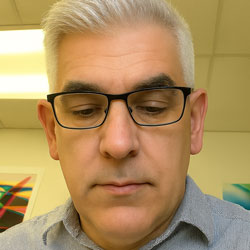
Why Composition Comes First in Tradeshow Design
Featuring Karen Hansler, WX Creative Director
In the world of tradeshow design, flashy graphics, towering structures, and eye-catching lights might steal the spotlight - but what really makes a trade show booth layout work is far less visible: composition.
We sat down with Karen Hansler, Creative Director at Westkey Xibita and veteran of over 28 years in exhibit and display design, to uncover what makes a custom exhibit stand out. Her answer was simple, powerful, and rarely talked about:
“If your floorplan has good composition, your 3D design will always work. If it doesn’t, it never will.”
– Karen Hansler
What Is Composition in Tradeshow Booth Design?
Composition isn’t just for art galleries. In tradeshow booth design, it refers to how you organize every element - walls, counters, towers, lighting, and pathways - so that the space feels natural, inviting, and aligned with your marketing goals.
Karen explains:
“Composition is angles, curves, sightlines - it’s making sure everything speaks to each other, even if it’s not physically connected. It’s what makes a visitor want to stay a little longer.”
At Westkey Xibita, composition is the first step in designing a custom trade show display that not only looks amazing but performs on the floor.
Start with Listening, Not Sketching
Before anything is rendered or built, Karen starts with discovery:
• What’s the main goal of this tradeshow exhibit?
• Who’s setting it up, and how many shows will it go to?
• Is there a product launch or message that anchors the experience?
“You can’t design a booth unless you know where it’s going. If two women in heels are setting it up, that changes everything. Design has to be smart and user-friendly, not just pretty.”
This client-first mindset is how Karen and the team ensure every exhibition booth design supports both the brand and the people using it.
Design From the Loading Dock Forward
Most people think design starts with visuals. Karen flips that logic completely.
“We always say, ‘Design from the loading dock forward.’ If it doesn’t work in the field, it’s not a success - no matter how great it looks.”
That means layout, packing, setup time, storage, and even crate size are factored into the early stages of every trade show booth design we do.
3 Composition Questions to Ask Before You Design Your Next Trade Show Display
Whether you're working with Westkey Xibita or building an internal brief, start with these:
1. What action should a visitor take? Book a meeting? Try a demo? Learn about a product?
2. Where is the natural flow into the booth? Corner? Inline? Peninsula?
3. What’s the visual and experiential focal point? Hero product, video wall, meeting area?
When these questions are answered early, you set the stage for a high-performing tradeshow display that actually delivers results.
Takeaway: Composition Is the Silent Hero of Trade Show Success
When a custom trade show booth feels good, looks cohesive, and functions smoothly - composition is the reason. It’s the unsung hero of every exhibit we build.
At Westkey Xibita, we believe great tradeshow design doesn’t start with flash - it starts with smart flow and strategic thinking.
